Branching Out: At the Feet of Trees
In 2010, the city of Strasbourg, France decided to transform Rue du Faubourg de Pierre, a main arterial between the downtown core and the surrounding highways, into an inclusive urban space. Bordered by numerous local businesses and buildings dating back from the end of the 19th to the beginning of the 20th century, the route required some far-reaching changes. The street was narrowed, the car lanes were reduced from 3 to 2, and the speed limit went from 50km/h to 30km/h. Bus and bike lanes were incorporated, the sidewalks widened and a generous planting of 30 trees complement the redevelopment of the artery.
Both the local residents association "Envie de quartier" and merchants participated in the development of the project before and during construction. The collaboration created an atmosphere of trust between residents, business owners and City Hall. The partnership was such a success that the city allowed citizens to select their preferred tree species - an ornamental non-fruiting pear cultivar.
A group of passionate gardeners, inspired by the Swiss guerrilla gardener, Maurice Maggi, proposed to re-vegetate the area surrounding the base of the tree and to assume all garden maintenance. The idea appealed to City Hall and a formal agreement followed, whereby a community garden-based system was created that would adhere to the city's green management policies of no pesticide or chemical use. Initial planting was restricted to 16 trees localized on the odd-numbered side of the street. The first bulbs were planted in late 2010, and upon the first rays of spring sun, the feet of the trees were adorned with greenery. Noticing the growing flowers keeping company with the trees, the inhabitants and local business-owners of the even-numbered side of the street made a request to reproduce the initiative.
Beyond the ecological dimension of reintroducing nature in the city, this project was strongly motivated by educational and social intentions. Indeed, three "tree feet" are maintained by the children of the local socio-cultural centre and three others will be taken care of by a neighbourhood school. Maintenance is done collectively the first Sunday of every month (gardening activities are followed by a brunch), as well as one Wednesday. These garden gatherings have fostered new relationships and a strong community spirit. Given the success of the program, the gardens and accompanying activities will most likely be renewed next year.
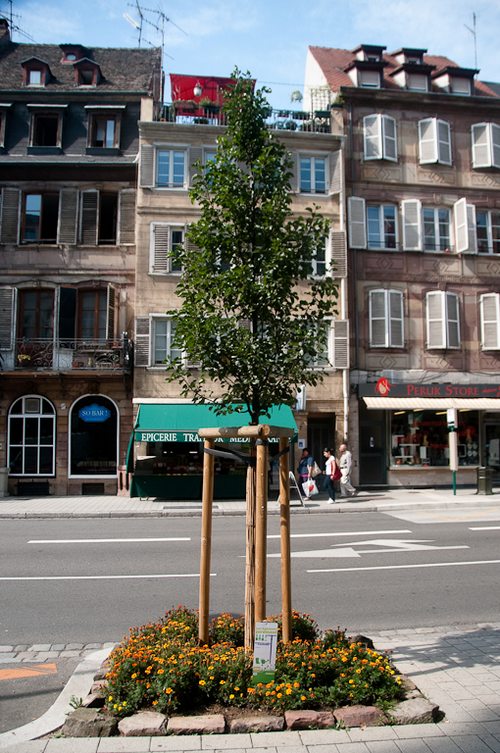
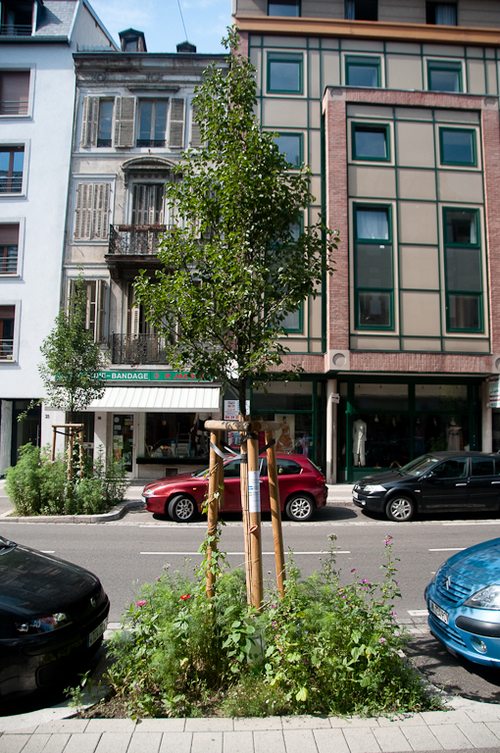
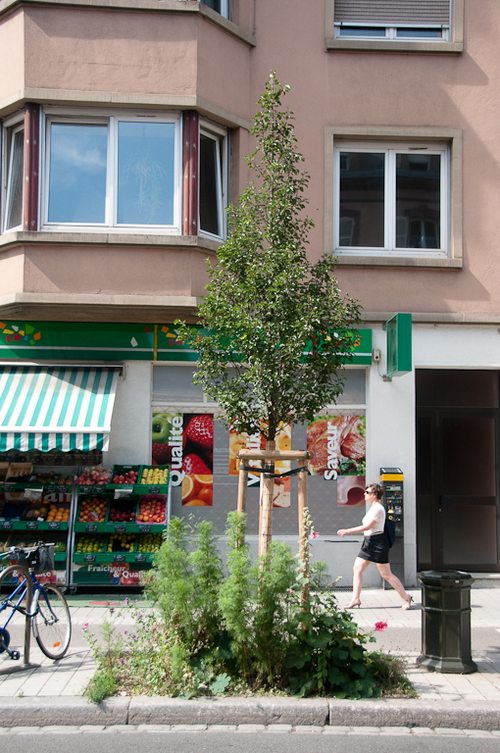
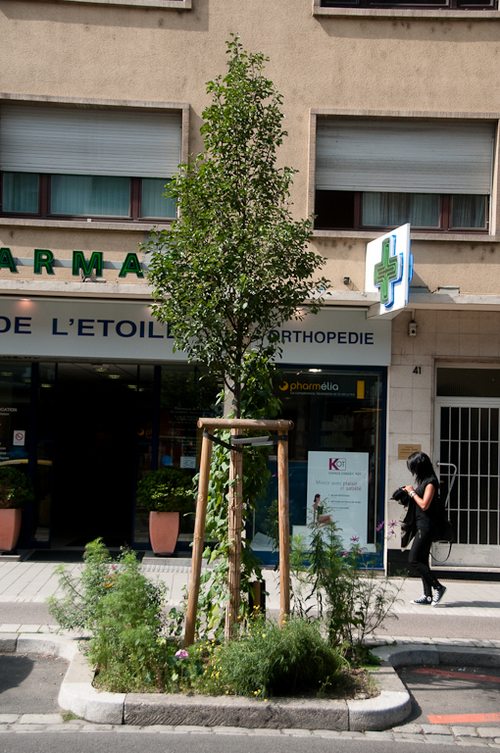
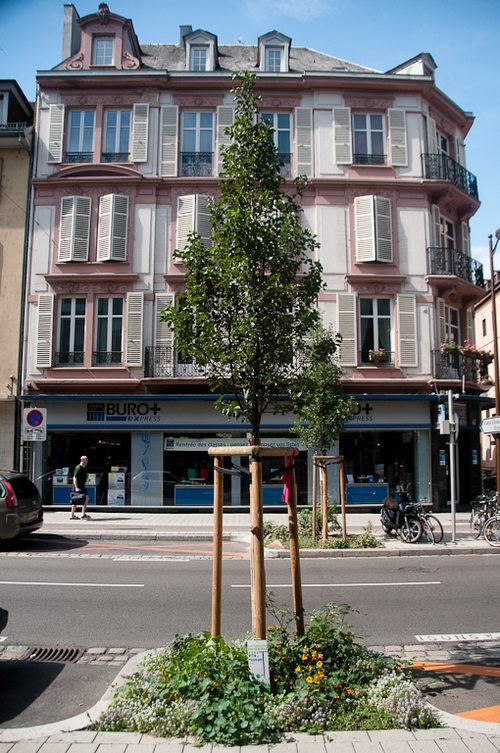
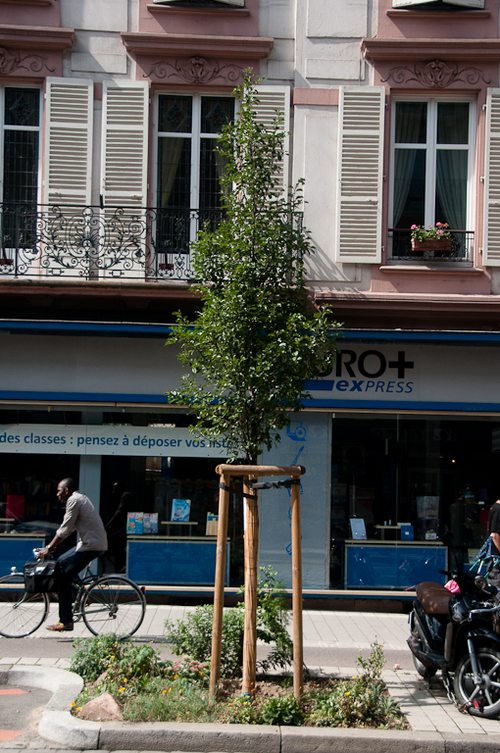
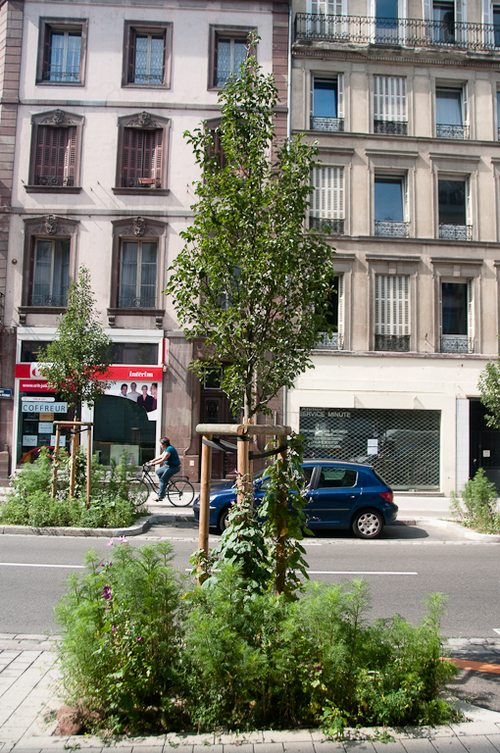

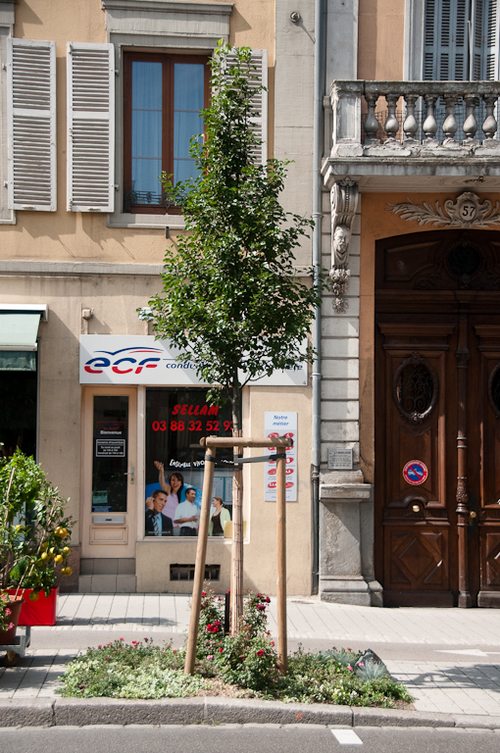
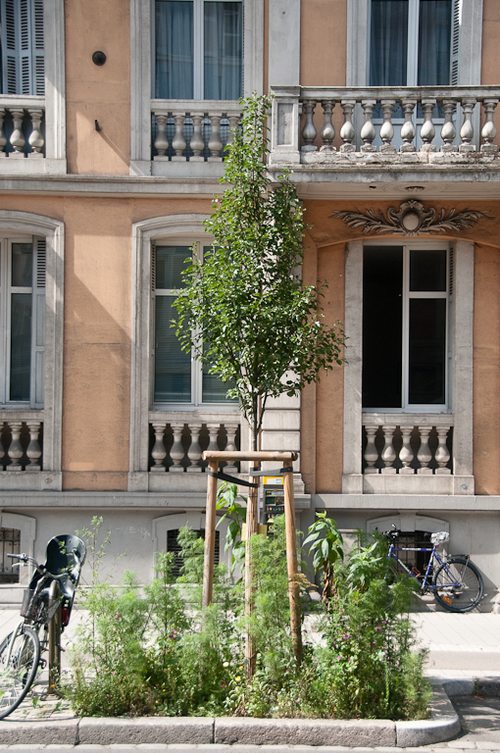
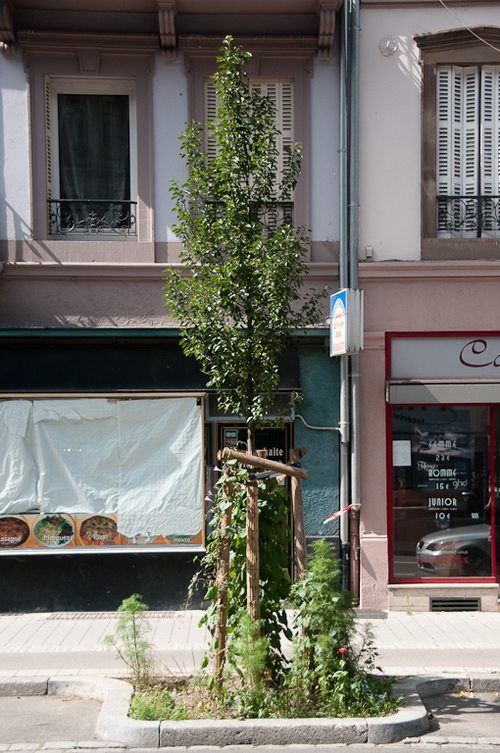
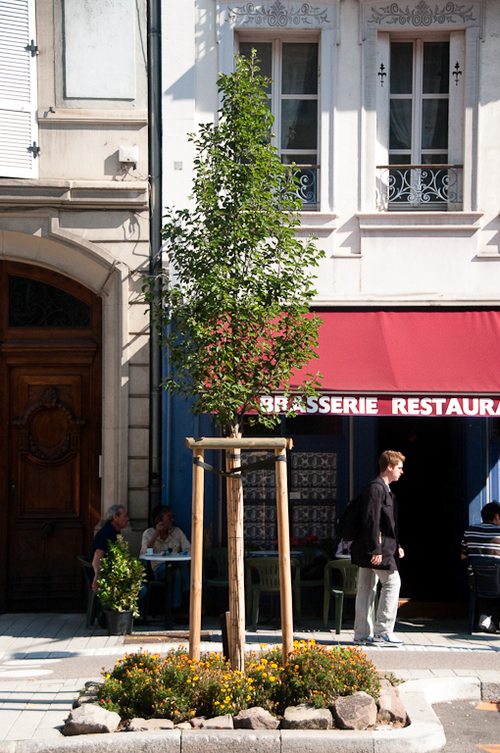
Photo credits: Grégory Delattre

